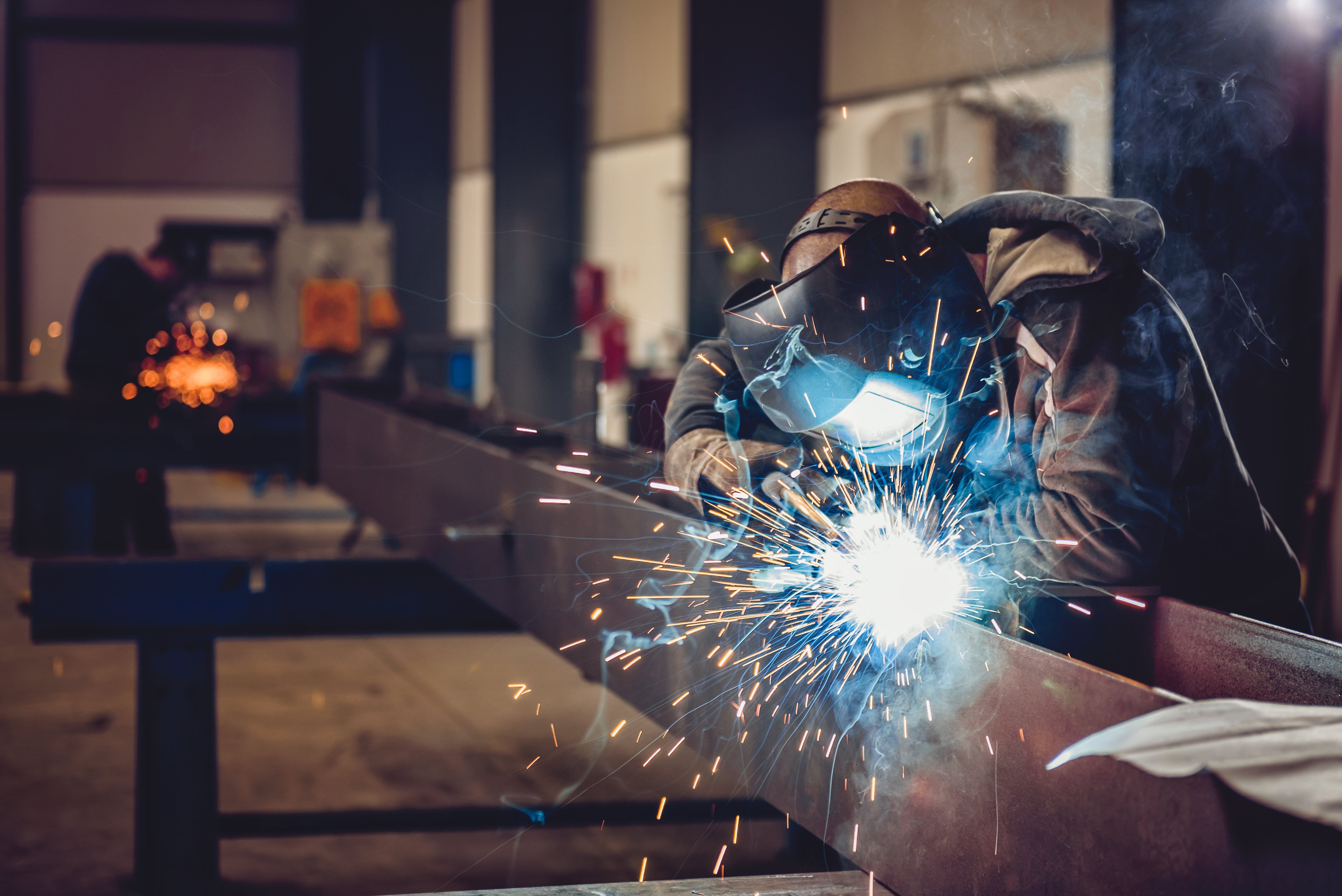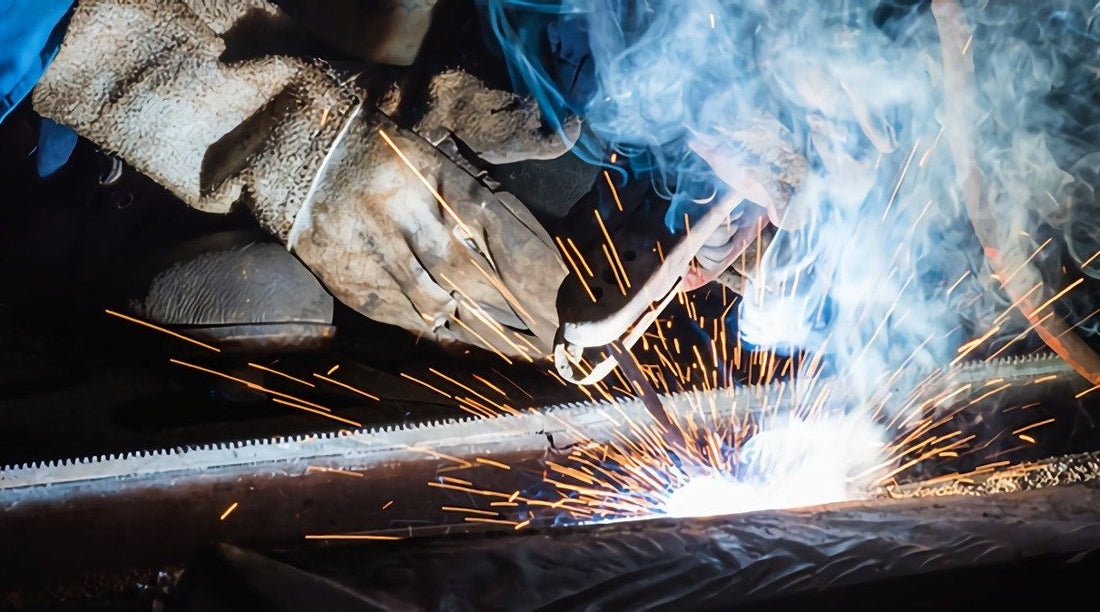Typical Welding Repair Work Issues and Exactly How to Address Them Successfully
Welding repairs often experience a variety of issues that can jeopardize the honesty of the last product. Usual issues include poor penetration, porosity, and misalignment, to name a few. Each problem offers special obstacles that call for specific strategies for resolution. Comprehending these issues is necessary for welders intending to improve their end results and abilities. This discussion will discover these usual welding repair issues and effective methods to resolve them.
Poor Infiltration
Poor penetration occurs when the weld metal stops working to totally fuse with the base product, causing weak joints and prospective structural failures. This issue usually originates from inadequate warm input, inaccurate electrode angle, or incorrect welding speed. Welders might run into poor penetration due to a mistake of the necessary parameters for a certain material thickness or type. Furthermore, contamination on the base product's surface area can prevent reliable bonding, intensifying the trouble. To resolve insufficient infiltration, welders must guarantee suitable setups on their devices and maintain a tidy work surface area. Normal examination of welds is suggested to recognize any shortages early, permitting timely corrections and the prevention of compromised structural honesty in bonded settings up.
Porosity
Porosity is a typical issue in welded joints that manifests as small gas bubbles caught within the weld steel. This issue can compromise the integrity of the weld, leading to lowered toughness and prospective failing under stress. Belgrade Fabrication. Porosity normally arises from contamination, wetness, or incorrect welding strategies, which permit gases to escape right into the liquified weld pool. To address porosity, welders ought to guarantee correct surface area prep work, keep a tidy working environment, and use appropriate welding criteria. Furthermore, choosing the right filler material and securing gas can mitigate gas entrapment. Normal evaluation and screening of welds can aid identify porosity early, assuring timely corrective activities are taken, thereby preserving the quality and reliability of the bonded framework
Imbalance
Misalignment in welding can arise from different factors, consisting of incorrect arrangement and thermal expansion. Comprehending the origin is vital for efficient resolution. Numerous improvement techniques are available to realign components and guarantee structural integrity.
Sources of Misalignment
Welding misalignment usually stems from a selection of underlying concerns that can jeopardize architectural integrity. One main cause is inappropriate fit-up of components before welding, which can lead to voids and unequal surfaces. Variants in thermal growth during the welding process can also result in distortion, specifically if the materials being signed up with have various coefficients of expansion. Furthermore, inadequate securing and fixturing might fall short to hold parts firmly in position, causing movement throughout welding. Improperly conserved equipment, consisting of welding equipments and tools, may present variances in the weld grain, further contributing to misalignment. Lastly, driver mistake, originating from not enough training or experience, can additionally play a significant duty in developing misaligned welds.
Improvement Techniques Offered
Resolving imbalance efficiently needs a mix of rehabilitative strategies tailored to the certain problems at hand. One common technique is the use of jigs or fixtures to hold elements in the right placement during welding, making certain consistent placement. Additionally, preheating the materials can help in reducing distortion and boost fit-up. For significant imbalance, mechanical adjustment methods, such as utilizing hydraulic jacks or clamps, can be used to deal with the placement before welding. Post-weld heat therapy may likewise be necessary to soothe stress and anxieties brought on by misalignment. Finally, mindful inspection and change throughout the arrangement stage can protect against misalignment concerns from becoming substantial problems, advertising a smoother welding procedure and improving overall architectural integrity.
Distortion
Distortion is an usual challenge in welding that can occur from various variables, consisting of irregular heating & cooling. Understanding the root causes of distortion is necessary for executing effective avoidance methods. Addressing this problem not only boosts architectural integrity however also boosts the total quality of the weld.
Sources of Distortion
When based on the intense heat of welding, products frequently undertake wikipedia reference adjustments that can result in distortion. This phenomenon primarily emerges from thermal expansion and contraction during the welding procedure. As the weld area warms up, the product increases; upon cooling, it acquires, which can create inner stress and anxieties. On top of that, uneven heating throughout a workpiece can intensify these stress and anxieties, causing bending or flexing. The kind of material additionally plays a considerable duty; metals with varying thermal conductivity and coefficients of growth might react in a different way, leading to unpredictable distortions. Moreover, poor joint style and insufficient fixturing can add to imbalance during welding, increasing the chance of distortion. Understanding these reasons is crucial for reliable welding fixing and prevention methods.
Prevention Techniques
Effective avoidance strategies for distortion during welding emphasis on managing warmth input and making sure correct joint style. Keeping a regular heat input helps to reduce thermal expansion and contraction, which can lead to distortion. Using strategies such as preheating the workpiece can also lower the temperature level gradient, advertising uniform home heating. Furthermore, choosing appropriate joint layouts, such as T-joints or lap joints, can improve security and minimize stress concentrations. Applying appropriate fixturing to secure the work surfaces in location further aids in keeping positioning during the welding process. Staggered welding sequences can disperse heat much more uniformly, avoiding local distortion. By applying these methods, welders can greatly reduce the chance of distortion and enhance the overall high quality of their welds.
Cracking
Cracking is a common problem come across in welding repairs, commonly resulting from different factors such as improper air conditioning rates, product choice, or poor joint preparation. The event of splits can significantly jeopardize the honesty of the weld, leading to potential failings during operation. To address this concern, welders have to first evaluate the root causes, making certain that products are compatible and suitably chosen for the particular application. Furthermore, regulating the cooling rate throughout the welding process is crucial; quick cooling can generate anxiety and cause cracking. Appropriate joint style and preparation also add to minimizing the threat. Executing these techniques can improve weld top quality and sturdiness, ultimately minimizing the chance of breaking in ended up weldments.

Insufficient Fusion
A significant concern in welding repair services is insufficient combination, which takes place when the weld metal does not adequately bond with the base product or previous weld passes - Belgrade Fabrication. This defect can lead to weak points in the joint, potentially endangering the integrity of the welded framework. Variables adding to insufficient fusion consist of inadequate warm input, incorrect welding technique, and contamination of the surface areas being signed up with. To address this concern effectively, welders must ensure proper pre-weld cleaning and surface prep work, in addition to change their welding parameters to achieve appropriate infiltration and combination. Normal evaluation during the welding process can also aid identify insufficient blend early, enabling for prompt rehabilitative steps to boost the general top quality of the weld
Overheating
While welding website link repair work can enhance architectural integrity, overheating presents a significant obstacle that can cause material degradation. Extreme warm throughout welding can change the mechanical residential properties of metals, resulting in lowered stamina, boosted brittleness, and warping. This sensation is specifically crucial in high-stress applications where structural dependability is vital. Determining overheating can involve visual evaluations for discoloration or distortion, in addition to keeping an eye on temperature throughout the welding process. To mitigate the dangers associated with overheating, welders ought to employ suitable techniques, such as managing warm input, readjusting traveling speed, and utilizing ideal filler products. Furthermore, applying pre- and post-weld warmth treatments can assist restore product homes and enhance the overall quality of the repair service, ensuring lasting efficiency and security.
Often Asked Concerns
What Are the Typical Indications of a Welding Issue?

How Can I Check My Welds for Top quality?
To check welds for quality, one can make use of aesthetic evaluations, ultrasonic testing, and radiographic techniques. Each method ensures structural integrity, recognizes problems, and verifies adherence to defined requirements, ultimately boosting the reliability of the bonded joints.
What Security Safety Measures Should I Take While Welding?
When welding, one need to prioritize safety and security by wearing appropriate personal protective equipment, making certain proper ventilation, securing combustible products away, keeping a clean workspace, and knowing surroundings to stop accidents and injuries.
Can I Fix a Weld Without Renovating the Entire Joint?
Repairing a weld without renovating the entire joint is feasible, depending on the damage (Montana Mobile Welding and Repair Fabrication). Techniques such as grinding, including filler material, or using a welding process can successfully resolve certain defects while preserving the bordering structure
What Tools Are Essential for Effective Welding Fixes?
Essential tools for effective welding repair services include a welding maker, cord brush, grinder, safety gear, clamps, and filler products. Each tool plays an essential role in guaranteeing high quality and safety throughout the repair process. Porosity commonly occurs from contamination, dampness, or inappropriate welding techniques, which permit gases to get away right into the molten weld pool. Inadequately maintained devices, including welding machines and tools, may introduce variances in the weld bead, more contributing to imbalance. When subjected to the intense heat of welding, products commonly go through adjustments that can lead to distortion. Breaking is an usual concern come across in welding fixings, often resulting from numerous variables such as incorrect cooling prices, material selection, or inadequate joint prep work. A considerable concern in welding fixings is insufficient combination, which occurs when the weld steel does not sufficiently bond with the base material or previous weld passes.